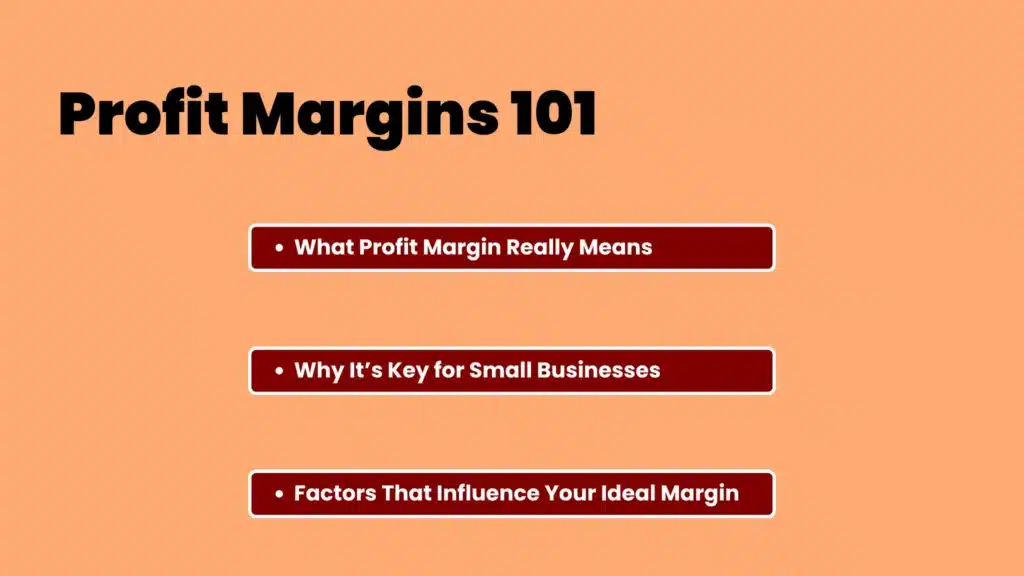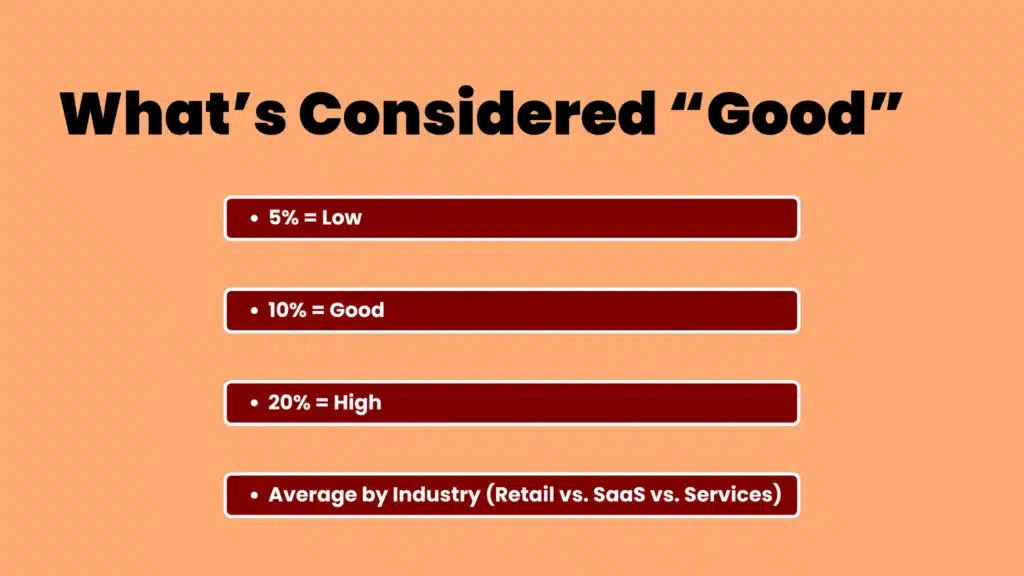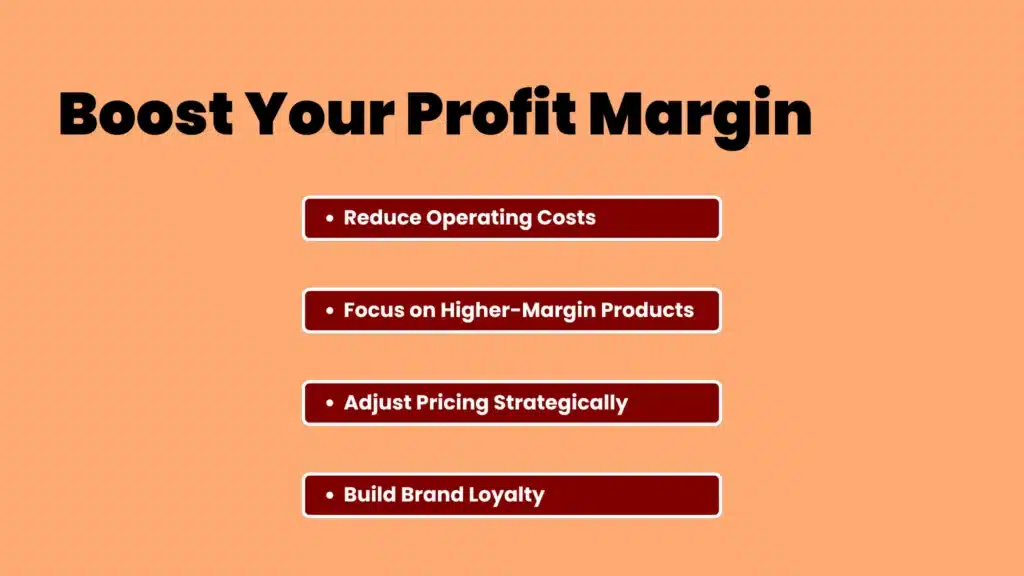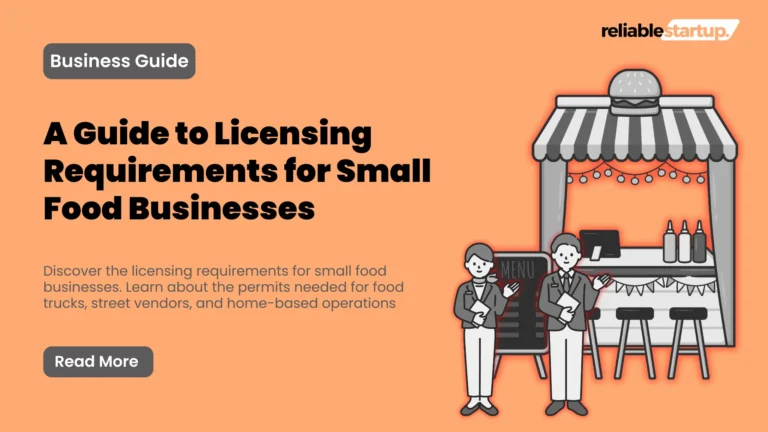What Is a Good Profit Margin for a Small Business?
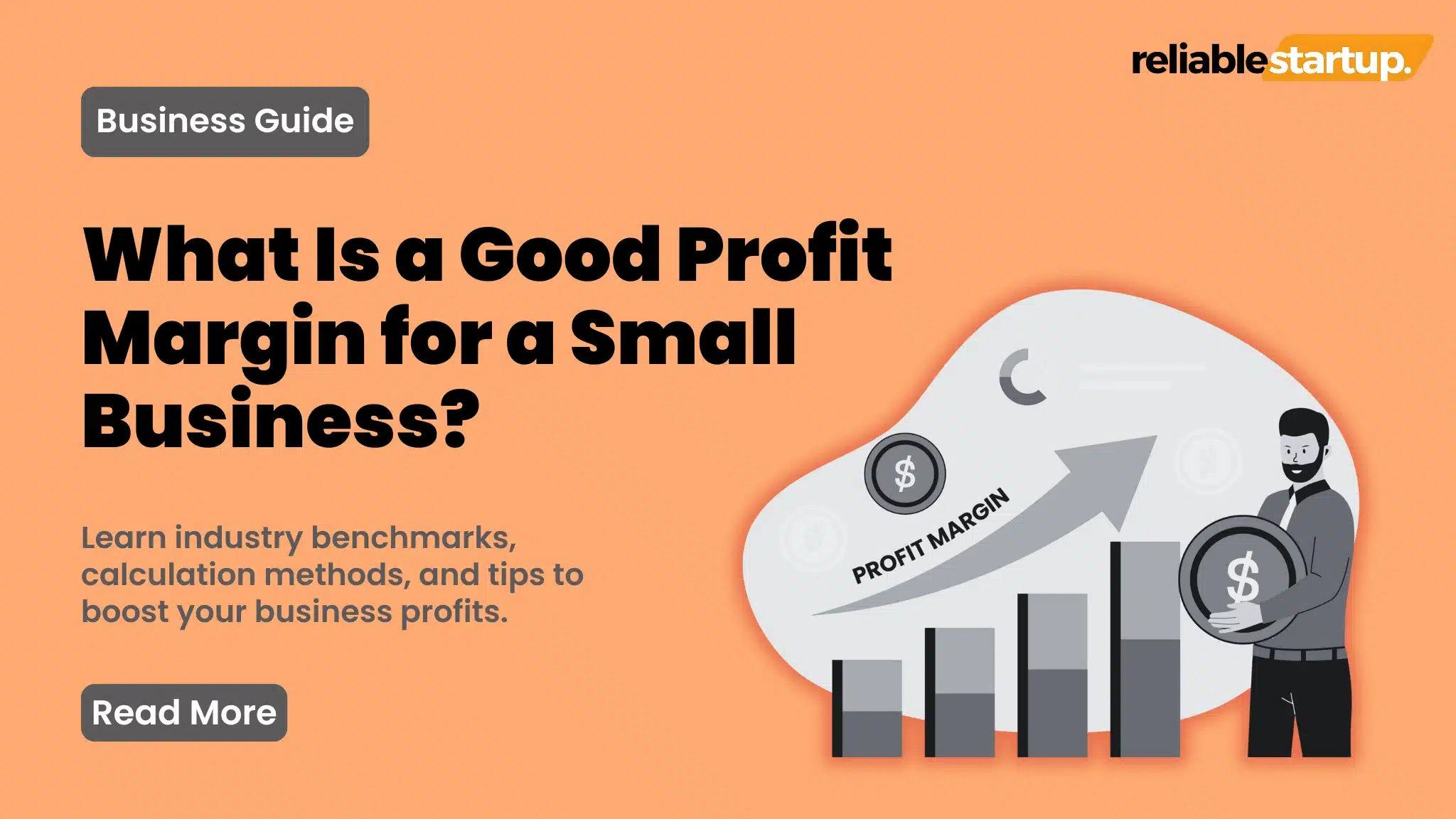
When we talk about profit, we mean the money that stays in your pocket after you have paid for every cost involved in running your business. Good profit margin is not just a number on your financial report. It is a snapshot of your business’s financial health.
It shows how much of your sales revenue becomes profit, how well you are controlling your costs, and how efficiently you are using your resources to deliver your products or services.
Many small business owners understand the basic idea of profit but struggle with the next big question: What is considered a good profit margin for a small business? The truth is, there is no one perfect answer. Your ideal profit margin depends on your industry, your location, the size and age of your business, and your long-term growth plans.
In this detailed guide, we will go through the different types of profit margins, how to calculate them, what is considered good in different industries, and how factors like business size and location play a role.
We will also look at industry averages, give you practical ways to improve your margins, and help you understand what these numbers mean for your business.
Types of Profit Margin
There are three main types of profit margins every business owner should know: gross profit margin, operating profit margin, and net profit margin. Each type tells a different story about your finances. Understanding all three will give you a complete picture of how your business is performing and where you can make improvements.
Gross Profit Margin
Gross profit is the amount left over from your revenue after you subtract the cost of goods sold (COGS). These are the direct costs of producing your products or delivering your services. COGS includes things like raw materials, packaging, direct labor, and manufacturing expenses.
Formula for Gross Profit:
Gross profit = revenue – cost of goods sold
Once you have the gross profit, you can calculate the gross profit margin:
Gross profit margin = (gross profit ÷ revenue) × 100
This calculation shows you the percentage of each dollar of sales that is left over after covering the direct costs of making your product. It is particularly useful for evaluating the profitability of individual products or services.
For example, if one product has a gross margin of 60 percent and another has a gross margin of 30 percent, you know which one is more profitable before considering overhead costs.
However, a healthy gross margin does not always mean the business is profitable overall. If your operating expenses are too high, you could still end up with little or no net profit.
Operating Profit Margin
Operating profit takes the analysis a step further. It is the amount left after you subtract both COGS and operating expenses from your revenue.
Operating expenses include costs like rent, utilities, employee salaries, marketing, and software subscriptions. Interest payments and taxes are not included in this calculation.
Formula for Operating Profit:
Operating profit = revenue – cost of goods sold – operating expenses
Formula for Operating Profit Margin:
Operating profit margin = (operating profit ÷ revenue) × 100
Operating profit margin gives you a better understanding of your core business performance. It shows how well you are managing day-to-day expenses and whether your pricing structure supports profitability after operational costs are taken into account.
Net Profit Margin
Net profit margin is the most comprehensive measure of profitability. It includes all costs: COGS, operating expenses, interest, and taxes. This figure shows you exactly how much of your revenue ends up as profit.
Formula for Net Profit:
Net profit = revenue – cost of goods sold – operating expenses – interest – taxes
Formula for Net Profit Margin:
Net profit margin = (net profit ÷ revenue) × 100
This is the figure most investors and lenders look at when deciding whether your business is a safe bet. Because it includes every expense, it tells the complete story of your profitability.
Example: Amazon’s Margins in March 2020
- Gross profit margin: 26.06%
- Operating profit margin: 5.29%
- Net profit margin: 3.36%
Even a massive company like Amazon operates with relatively slim net margins because of the significant costs involved in logistics, operations, and global expansion.
What Is an Ideal Profit Margin?
A report from New York University found that the average net profit margin across U.S. industries is about 7.71 percent. However, this average hides a lot of variation between industries.
A general guideline is:
- 5 percent is considered low
- 10 percent is considered good
- 20 percent is considered high
But your target margin should not be based on these numbers alone. Different industries have different cost structures.
For example:
- Grocery stores and retail outlets usually operate with low margins because of high inventory costs, labor requirements, distribution expenses, and rent. These businesses rely on high sales volumes to make up for their small margins.
- SaaS companies, consulting firms, and jewelry businesses often have higher margins because they require less inventory, have lower overhead costs, and can command higher prices.
Business Age, Size, and Location Matter
The age and size of your business can significantly affect your profit margin. New businesses sometimes have higher margins because they are leaner, with smaller teams, lower rent costs, and fewer expenses. They may operate from home offices, use shared workspaces, or rely on freelancers instead of full-time staff.
As a business grows, it typically takes on more overhead. Additional employees, larger facilities, more equipment, and broader product lines all add costs. While total revenue might increase, the percentage of revenue that becomes profit can shrink.
Location is another critical factor. A business in a high-cost city like San Francisco will face higher rent, wages, and taxes compared to a similar business in Dallas. These location-based costs can make a big difference in profit margins even if both businesses charge the same prices.
Your growth goals also play a role. If you want to attract investors, open a new location, or buy expensive equipment, you will need higher margins to give you the financial flexibility to make those moves.
Average Profit Margins by Industry
Here is a table showing the average net profit margins for various sectors in the United States:
| Industry | Average Net Profit Margin |
| Advertising | 3.30% |
| Apparel | 5.87% |
| Auto and truck | 3.04% |
| Auto parts | 3.05% |
| Beverage (alcoholic) | 7.94% |
| Beverage (soft) | 18.50% |
| Brokerage and investment banking | 17.62% |
| Building materials | 4.30% |
| Business and consumer services | 3.83% |
| Computer services | 4.34% |
| Drugs (pharmaceutical) | 18.38% |
| Education | 9.59% |
| Electronics (consumer and office) | -3.14% |
| Electronics (general) | 5.70% |
| Engineering and construction | 1.00% |
| Entertainment | 11.73% |
| Farming and agriculture | 2.47% |
| Financial services (non-bank and insurance) | 26.94% |
| Furniture and home furnishings | 5.15% |
| Healthcare products | 9.27% |
| Household products | 4.73% |
| Information services | 19.13% |
| Insurance (general) | 6.26% |
| Investments and asset management | 21.06% |
| Office equipment and services | 4.91% |
| Publishing and newspapers | -1.64% |
| REIT | 15.17% |
| Real estate (development) | 6.65% |
| Real estate (general and diversified) | 19.75% |
| Real estate (operations and services) | 3.59% |
| Recreation | 1.15% |
| Restaurants and dining | 10.57% |
| Retail (general) | 2.44% |
| Retail (grocery and food) | 1.44% |
| Retail (online) | 4.57% |
| Shoe | 10.48% |
| Software (entertainment) | 20.53% |
| Software (internet) | 2.07% |
| Software (system and application) | 19.54% |
| Transportation | 3.79% |
These numbers show just how different margins can be from one sector to another.
How to Improve Your Profit Margin
If your profit margin is lower than you would like, there are two main strategies to improve it: increasing revenue and reducing costs. Often, a combination of both works best.
- Reduce Operating Costs
Review every expense, from rent and utilities to software subscriptions and marketing. Negotiate better rates, switch to more cost-effective suppliers, and cut unnecessary services. Even small changes can add up over time. - Focus on Higher-Margin Products or Services
Use a break-even analysis to find out which products or services bring the most profit. Reduce or remove low-margin offerings and invest more in those that are most profitable. - Adjust Your Pricing Strategy
Experiment with different pricing models. Value-based pricing, for example, focuses on what customers are willing to pay rather than just adding a markup to your costs. - Build Brand Loyalty
Loyal customers buy more often, spend more per purchase, and are less sensitive to price increases. Use email marketing, loyalty programs, and great customer service to keep them coming back.
Frequently Asked Questions
What is considered a good profit margin for a small business?
A good profit margin for a small business is often between 10 and 20 percent, depending on the industry. Service-based businesses can have margins above 20 percent, while product-based businesses, especially those in retail, may have margins as low as 2 to 5 percent. The definition of “good” depends on your business model, cost structure, and location.
How do I calculate a good profit margin for my small business?
To calculate your profit margin, subtract all expenses from your total revenue, then divide the result by your total revenue and multiply by 100. For example, if your business earns $100,000 in revenue and your total expenses are $80,000, your profit is $20,000. Dividing $20,000 by $100,000 and multiplying by 100 gives you a profit margin of 20 percent.
Why is a good profit margin important for a small business?
A good profit margin for a small business ensures that you are not just covering expenses but also generating enough surplus to reinvest, expand, and withstand slow periods. Strong margins also make your business more attractive to lenders and investors, giving you better opportunities for growth.
Does industry affect what is considered a good profit margin for a small business?
Yes. Industries like software, consulting, and luxury goods tend to have higher profit margins, sometimes above 20 percent. On the other hand, businesses like grocery stores or transportation companies often have lower margins, sometimes below 5 percent. Always compare your margin to the average in your specific industry.
How can I improve my profit margin as a small business owner?
To improve your profit margin, you can reduce operating costs, raise prices strategically, focus on higher-margin products or services, and build customer loyalty. A combination of these approaches often produces the best results. Tracking your margins regularly allows you to spot problems early and make adjustments before they hurt your bottom line.
The Bottom Line
Profit margin is one of the most important indicators of your business’s financial health. It shows whether your business is sustainable, competitive, and appealing to investors.
While there are industry averages to guide you, the right margin for your business depends on your specific situation, including your size, location, and goals.
By understanding your margins, tracking them regularly, and making strategic changes to pricing, costs, and product offerings, you can work toward building a business that is both profitable and resilient.

